Abstract
Five groups of pigeons received seven sessions of variable-interval reinforcement for pecking a blank white key, followed by either 1, 2, 4, 8, or 16 sessions of training on a successive discrimination in which the positive stimulus was the blank white key and the negative stimulus was a black vertical line on the white key. After training, a generalization test was administered along the line-tilt continuum. Relative gradients of inhibition became steeper with increased amounts of training, and reliably nonhorizontal absolute gradients were obtained only from groups of subjects with at least four days of training. Therefore, inhibitory stimulus control improves with added training. Several problems with the concept of “inhibition” are examined and some implications of the results for theoretical analyses of operant discrimination learning are discussed.
Full text
PDF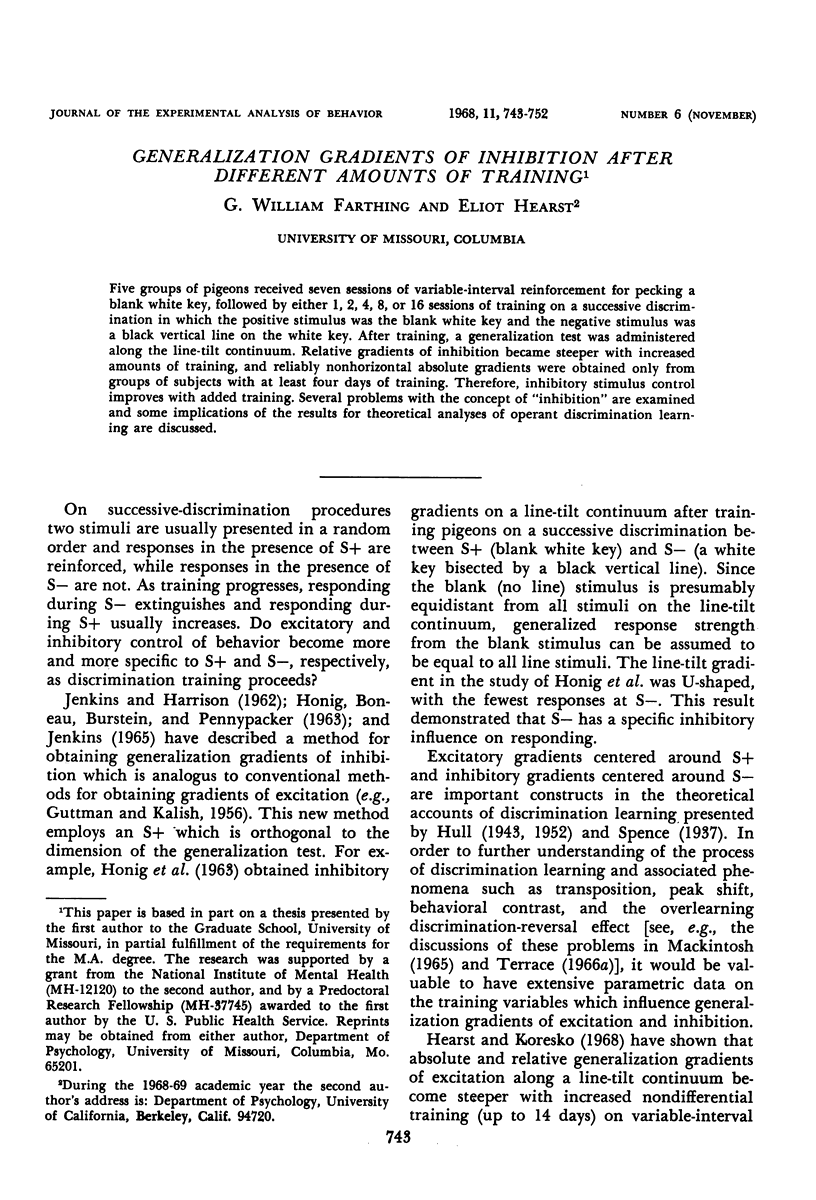
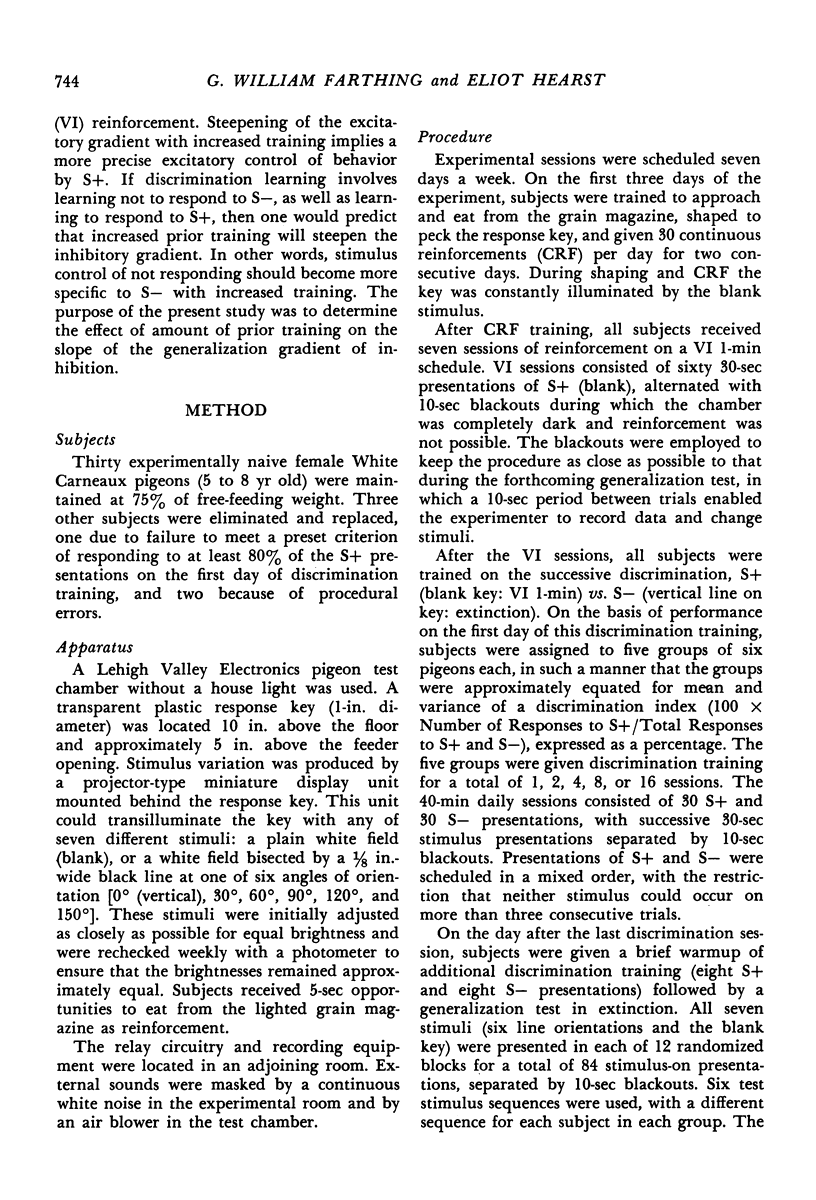
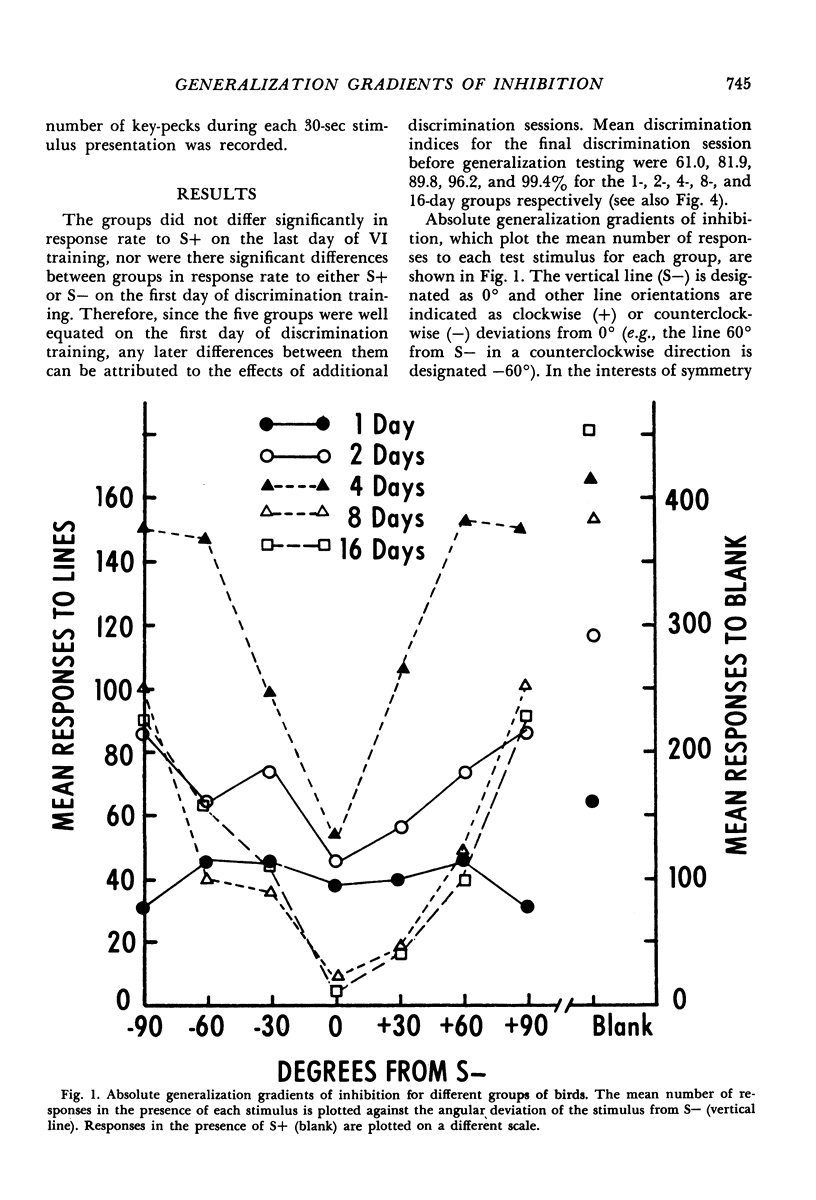
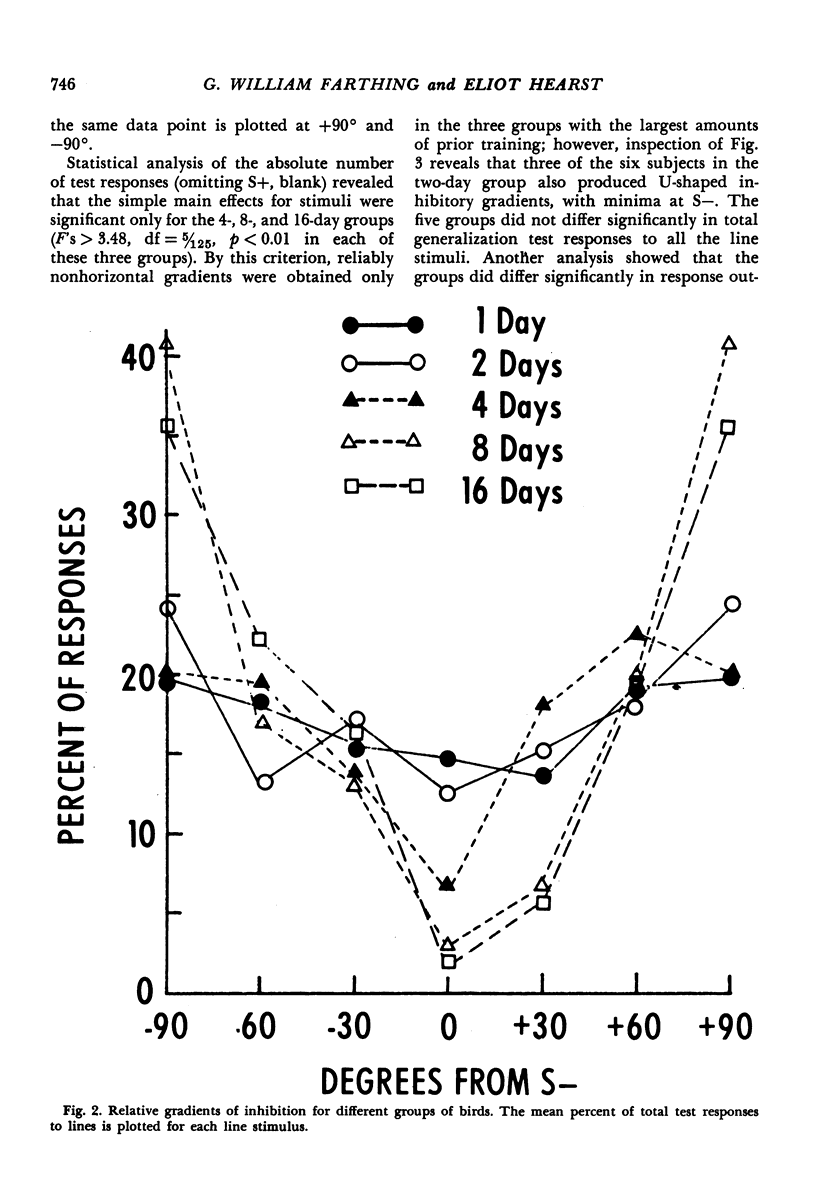
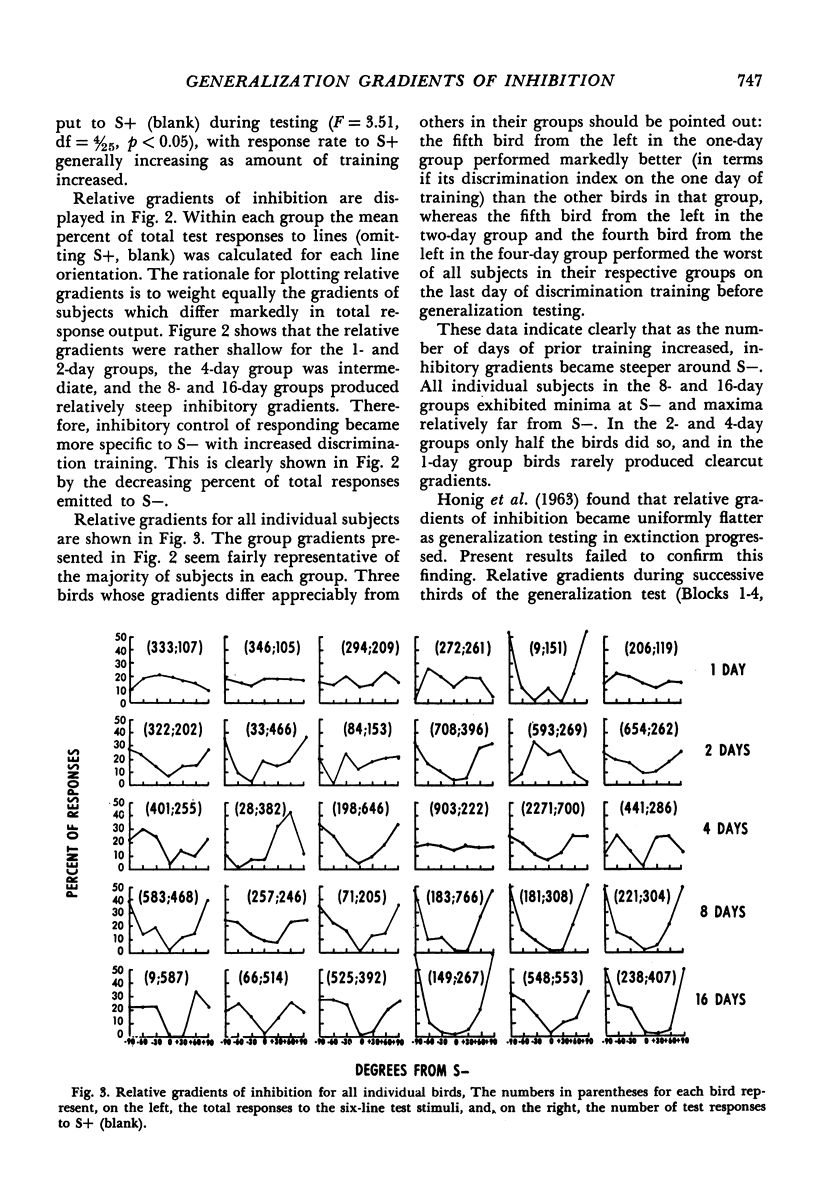
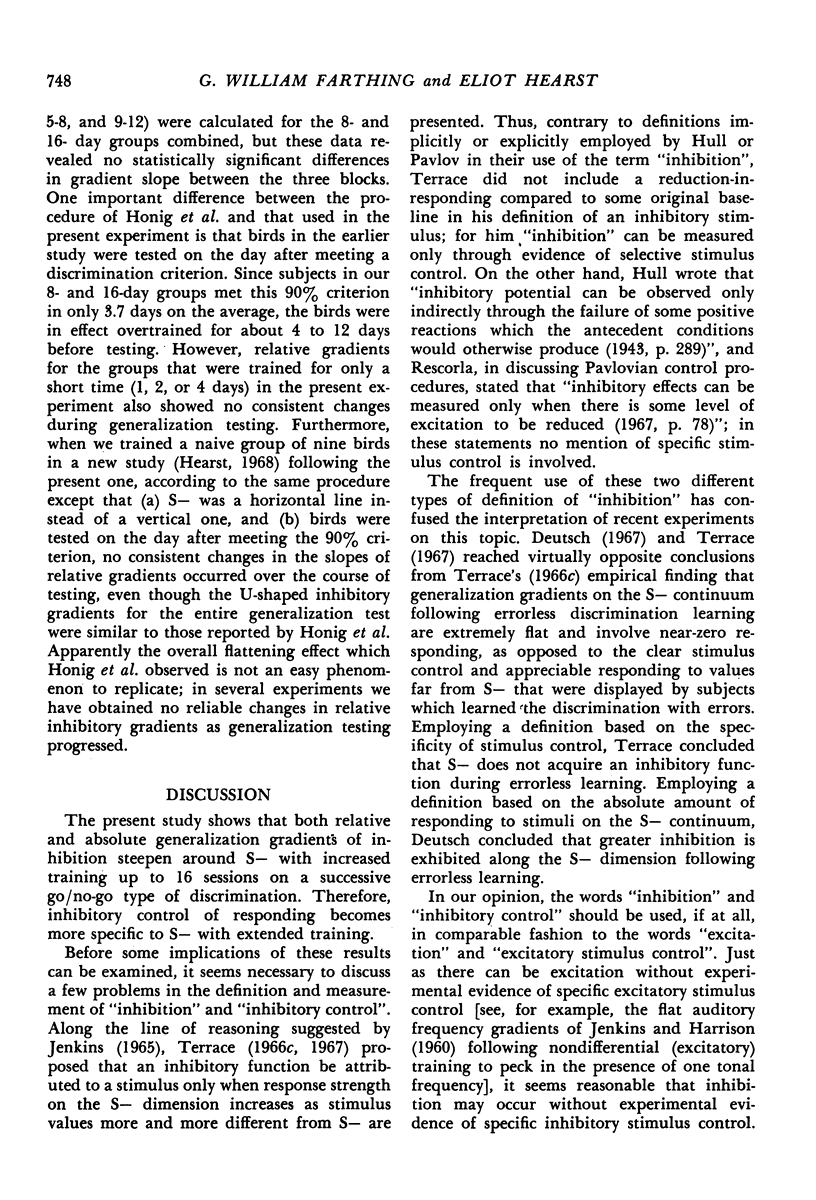
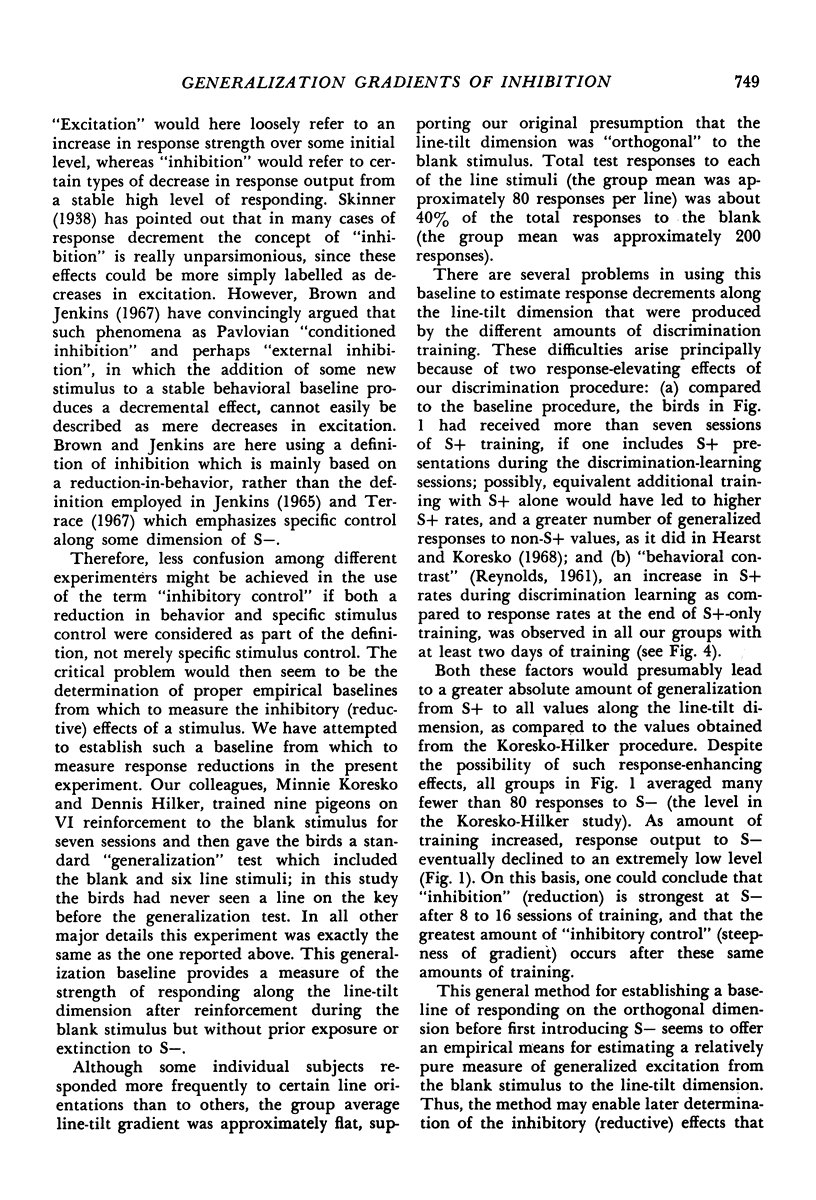
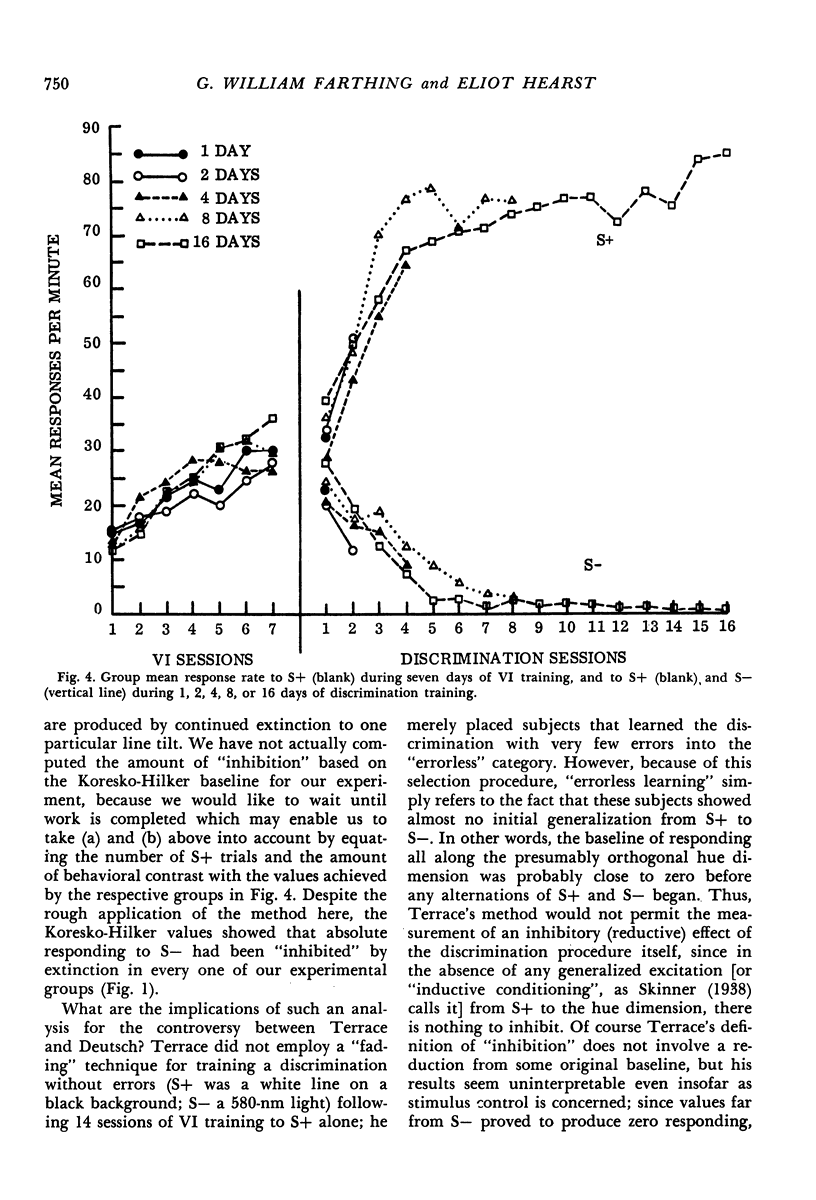
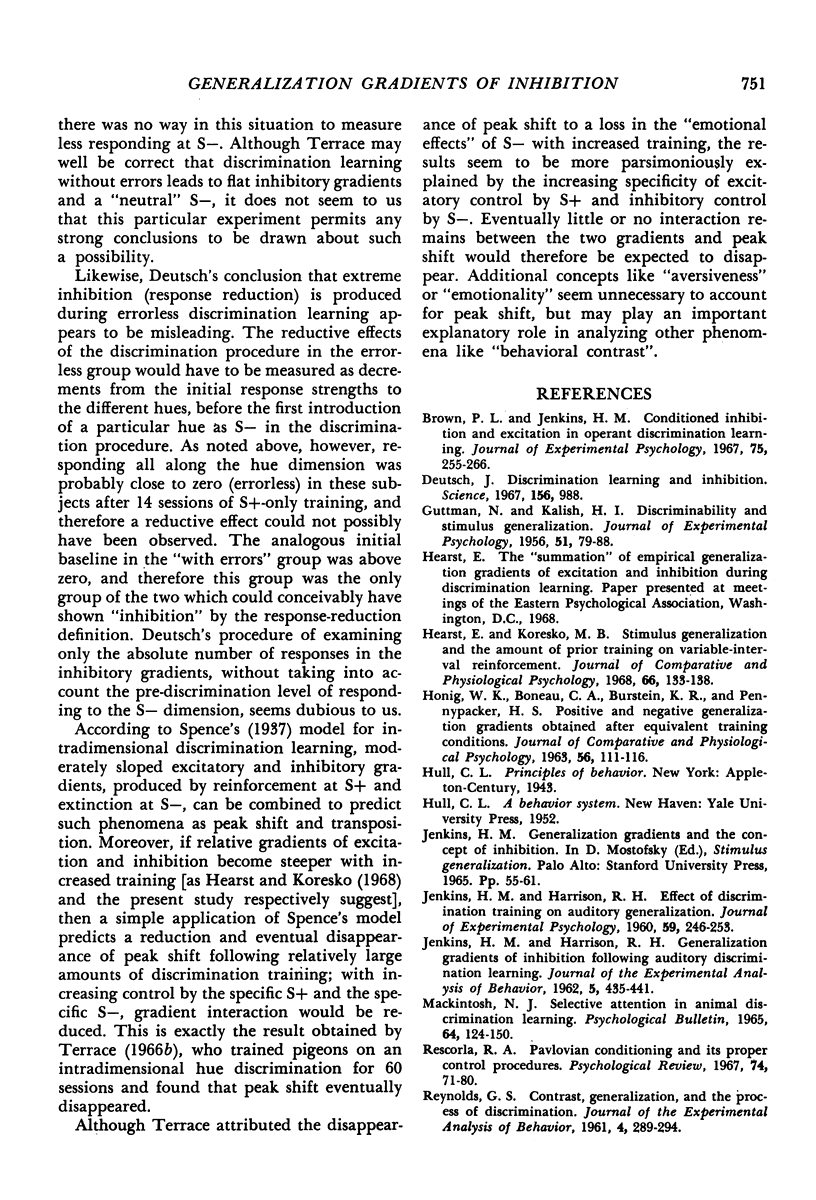
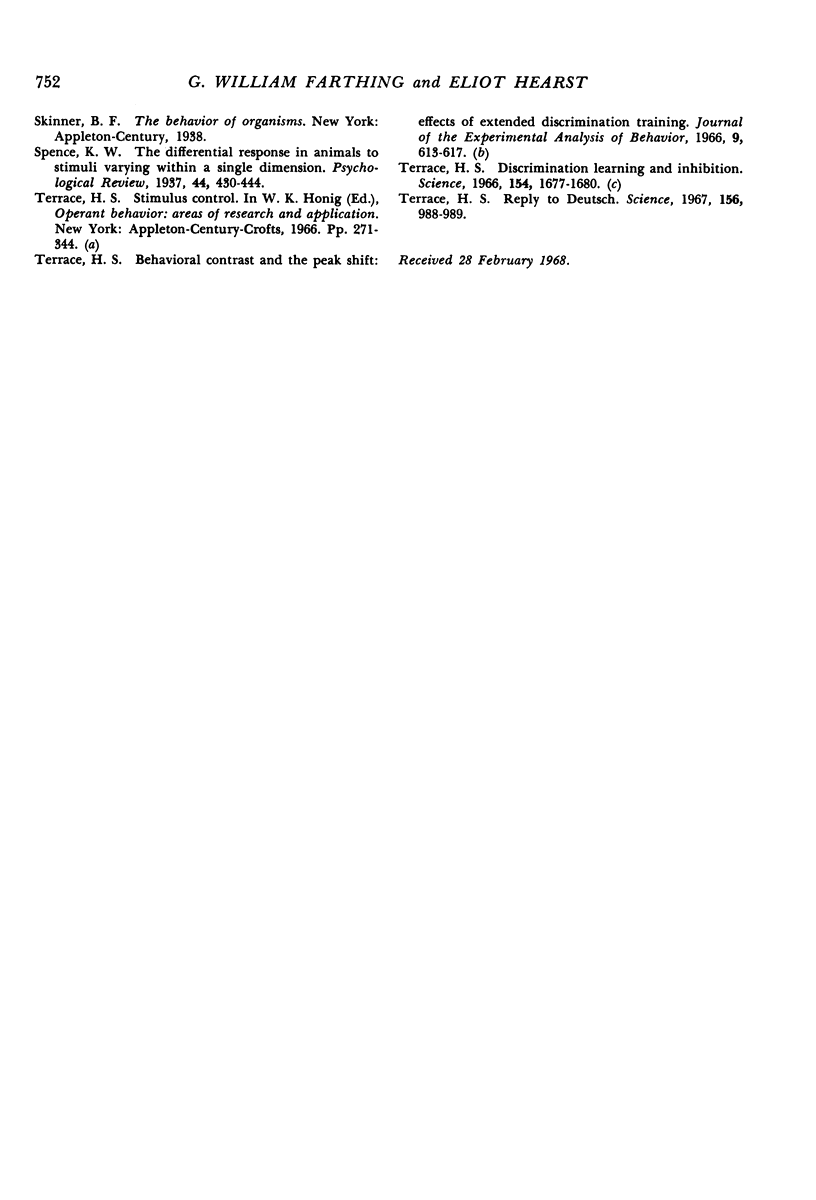
Selected References
These references are in PubMed. This may not be the complete list of references from this article.
- Brown P. L., Jenkins H. M. Conditioned inhibition and excitation in operant discrimination learning. J Exp Psychol. 1967 Oct;75(2):255–266. doi: 10.1037/h0024985. [DOI] [PubMed] [Google Scholar]
- Deutsch J. A., Terrace H. S. Discrimination learning and inhibition. Science. 1967 May 19;156(3777):988–989. doi: 10.1126/science.156.3777.988. [DOI] [PubMed] [Google Scholar]
- Deutsch J. A., Terrace H. S. Discrimination learning and inhibition. Science. 1967 May 19;156(3777):988–989. doi: 10.1126/science.156.3777.988. [DOI] [PubMed] [Google Scholar]
- GUTTMAN N., KALISH H. I. Discriminability and stimulus generalization. J Exp Psychol. 1956 Jan;51(1):79–88. doi: 10.1037/h0046219. [DOI] [PubMed] [Google Scholar]
- Hearst E., Koresko M. B. Stimulus generalization and amount of prior training on variable-interval reinforcement. J Comp Physiol Psychol. 1968 Aug;66(1):133–138. doi: 10.1037/h0025992. [DOI] [PubMed] [Google Scholar]
- JENKINS H. M., HARRISON R. H. Effect of discrimination training on auditory generalization. J Exp Psychol. 1960 Apr;59:246–253. doi: 10.1037/h0041661. [DOI] [PubMed] [Google Scholar]
- JENKINS H. M., HARRISON R. H. Generalization gradients of inhibition following auditory discrimination learning. J Exp Anal Behav. 1962 Oct;5:435–441. doi: 10.1901/jeab.1962.5-435. [DOI] [PMC free article] [PubMed] [Google Scholar]
- MACKINTOSH N. J. SELECTIVE ATTENTION IN ANIMAL DISCRIMINATION LEARNING. Psychol Bull. 1965 Aug;64:124–150. doi: 10.1037/h0022347. [DOI] [PubMed] [Google Scholar]
- REYNOLDS G. S. Contrast, generalization, and the process of discrimination. J Exp Anal Behav. 1961 Oct;4:289–294. doi: 10.1901/jeab.1961.4-289. [DOI] [PMC free article] [PubMed] [Google Scholar]
- Rescorla R. A. Pavlovian conditioning and its proper control procedures. Psychol Rev. 1967 Jan;74(1):71–80. doi: 10.1037/h0024109. [DOI] [PubMed] [Google Scholar]
- Terrace H. S. Behavioral contrast and the peak shift: effects of extended discrimination training. J Exp Anal Behav. 1966 Nov;9(6):613–617. doi: 10.1901/jeab.1966.9-613. [DOI] [PMC free article] [PubMed] [Google Scholar]
- Terrace H. S. Discrimination learning and inhibition. Science. 1966 Dec 30;154(3757):1677–1680. doi: 10.1126/science.154.3757.1677. [DOI] [PubMed] [Google Scholar]


